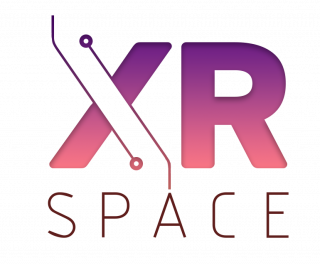The development targets of the XR-SPACE – XR Simulation and Presence at the Cloud Edge project include vehicles operating in different environments with their (remote) operators and the opportunities presented by realistic virtual interaction in remote meetings, maintenance, and training.
In addition to Tampere University, Metropolia University of Applied Sciences and ten Finnish companies are partners in the ecosystem project.
At Tampere University, the research is conducted at three faculties: at the Faculty of Information Technology and Communication Sciences, Faculty of Medicine and Health Technology, and Faculty of Management and Business. From Metropolia University of Applied Sciences, the Smart Mobility Innovation Hub and Helsinki XR Center are involved in the project.
New solutions for multi-channel analytics and risk management of vehicles
The XR-SPACE project seeks to develop and utilise multi-dimensional analytics of vehicles operating in professional environments, e.g., in heavy, air, and maritime transport. The analytics covers the data collected from the activities of the operator, the device being operated, and the operating environment. The operation may take place in the vehicle or remotely.
“The XR-SPACE project uniquely combines two high-tech research units at Metropolia with leading Finnish industrial companies in the field. The project continues long-term changes developed in transport, both in terms of increased safety and new services,” mentions Oscar Nissin, Innovation Director at Metropolia University of Applied Sciences.
The main focus is on efficient and seamless information processing, using both local edge computing and traditional remote cloud computing model. The goal is for the operation to be delay-free and smooth no matter where the computing and operation take place.
“Collaboration with research institutes in the XR-SPACE project enables the exploration of new user perspectives and the utilization of the latest research results. New digital solutions developed for shipping require long-term research collaboration, as they will change the roles of operators either on board or ashore in the future. Thus, a completely new approach is required to develop user experiences,” points out Juha Rokka, CEO at Groke Technologies.
Hologram development enables more efficient and effective remote working
The XR-SPACE also aims to take a step forward from the existing cartoon-like telepresence systems. This means connecting remote people virtually with an edge-powered, XR-based volumetric video communication system that supports real-time holographic-like interaction between multiple participants.
The possibilities of photorealistic interaction can be applied, e.g., in remote meetings, maintenance, training, and operation.
“The XR-SPACE project provides an excellent opportunity to apply the latest volumetric video capture, compression, and streaming technologies in collaboration with companies in the industry, thereby adding value to the technology development of XR-based interaction systems. Particularly, the optimisation of calculation-intensive MPEG compression coding technologies for real-time volumetric communication needs is cutting-edge research in the field, both in Finland and around the world,” says Jarno Vanne, Associate Professor at Tampere University.
Aiming to enhance the competitiveness of the whole Finnish XR ecosystem
The XR-SPACE consortium consists of a multi-disciplinary blend of top-notch Finnish industry and academic partners, which provides an excellent springboard to boost the competitiveness of the whole Finnish XR ecosystem.
The ambitious goal of the project is to offer solutions to the global collaborative telepresence and remote-operation markets. It seeks to find ways to address such fundamental societal challenges as improving safety, reducing ecological footprint, and climate change mitigation.
“In the XR-SPACE project, we are combining our expertise with research institutes and the professionals in civil aviation. This way we may find new business opportunities, for example, by applying XR technology for educational use. Combining research work with a development project helps to grow special expertise and stand out from other actors in the same field,” emphasises Petteri Alinikula, Global Research Director & CTO at Saab Finland.
“Participating in a project where academic research and wide-ranging business cooperation meet helps us to ensure that we have the most advanced research knowledge to support our customers’ daily lives and risk management,” says Marjut Venäläinen, Business Lead, Motor Vehicle Insurance for Businesses at Pohjola Insurance.
“Carefully selected research and development measures and industrial ecosystems enable us building a centre of expertise in Finland that covers all key areas of the industrial metaverse and extended reality value chain, ranging from future network and multimedia technologies to enterprise software applications. The XR-SPACE project provides an excellent foundation for the new metaverse strategy in Finland that we are building together,” notes Ville-Veikko Mattila, Head of Multimedia Technologies at Nokia Technologies Oy.
“XR-SPACE forms a unique whole with an exceptionally committed and complementary consortium. In addition to the two focus areas, the project includes several case studies, through which research parties and companies engage in concrete cooperation that benefits as many parties as possible. In addition to the companies involved, research results will be implemented throughout the project in different ways to other parties as well,” mentions Professor Markku Turunen from Tampere University, who leads the XR-SPACE consortium. An example is the “Roadshow” concept with FIMA (Forum for Intelligent Machines), which represents a wide range of companies.
“The concept developed in previous projects brings the research to the companies by applying the developed solutions to their own operations. This will significantly expand the impact of the project on the business community,” Turunen points out.
XR-SPACE briefly
- The XR-SPACE is part of the Veturi ecosystem project, with the following partners: Nokia Technologies Oy, Creanex Oy, Finnair Oyj, Groke Technologies Oy, Pohjola Insurance, Saab Finland Oy, Softability Oy, Taipale Telematics Oy, Varjo Oy (In-Kind), Viaccess-Orca Finland Oy, Metropolia University of Applied Sciences, and Tampere University.
- The project is funded by Business Finland and participating companies and research institutes.
- The total budget of the project is EUR 10.8 million and is ongoing from 2022 to 2025.
- Tampere University is coordinating the project.
Contact person
Professor Markku Turunen
XR-SPACE Consortium Leader
markku.turunen(at)tuni.fi
Tel. +358 40 5339 68


